The WBA annually publishes the Global Bioenergy Statistics reports, which provide insight into the intricate dynamics of the global bioenergy landscape, including Fossil Fuels vs. Renewable Energy, Electricity Sector Dynamics, Renewable Heat Production, Transportation Industry Challenges and Bioenergy commodities.
Below are some of the key findings from the 2023 report.
GLOBAL ENERGY SUPPLY
Fossil fuels continue to dominate the global energy supply. In 2021, the Total Primary Energy Supply globally was 618 EJ – fossil fuels had a share of 80% (Coal 27%, Oil 29%, and Gas 24%) TPES of nuclear power was 30.7 EJ, accounting for 5% of the overall energy mix. Renewable energy technologies of solar, wind, hydro, biomass, geothermal, etc., accounted for 90.8 EJ, representing 15% of the total primary energy supply in 2021.
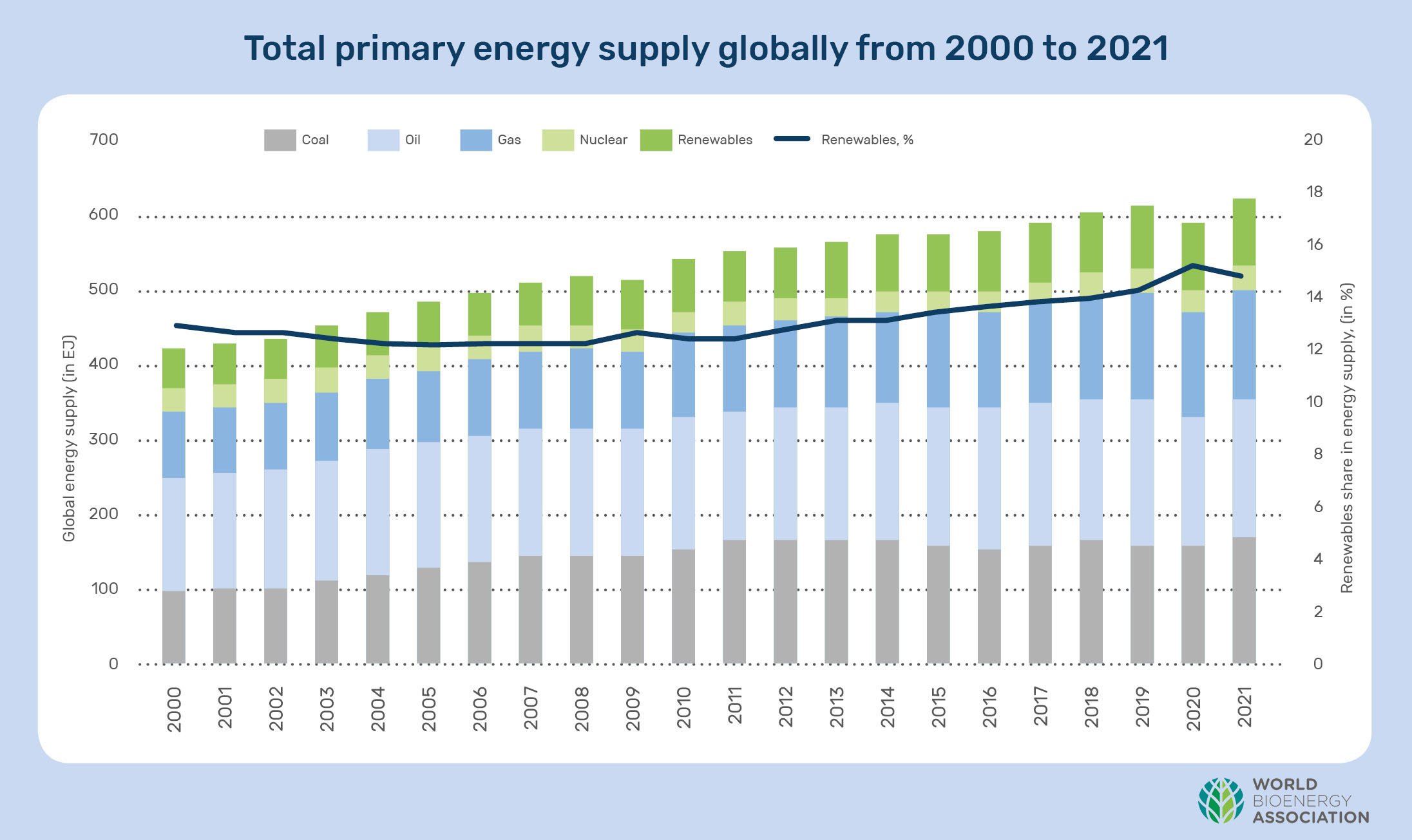
ELECTRICITY
In 2020, 26 833 TWh of electricity was generated globally with renewables having a share of 29% (7 669 TWh), mainly driven by the increasing use of solar and wind as well as significant contribution from hydropower and biomass. Hydropower was the largest renewable electricity generating source with a share of 58% followed by wind at 21%. Bioenergy was the 4th largest renewable electricity generating source with production of 685 TWh in 2020.
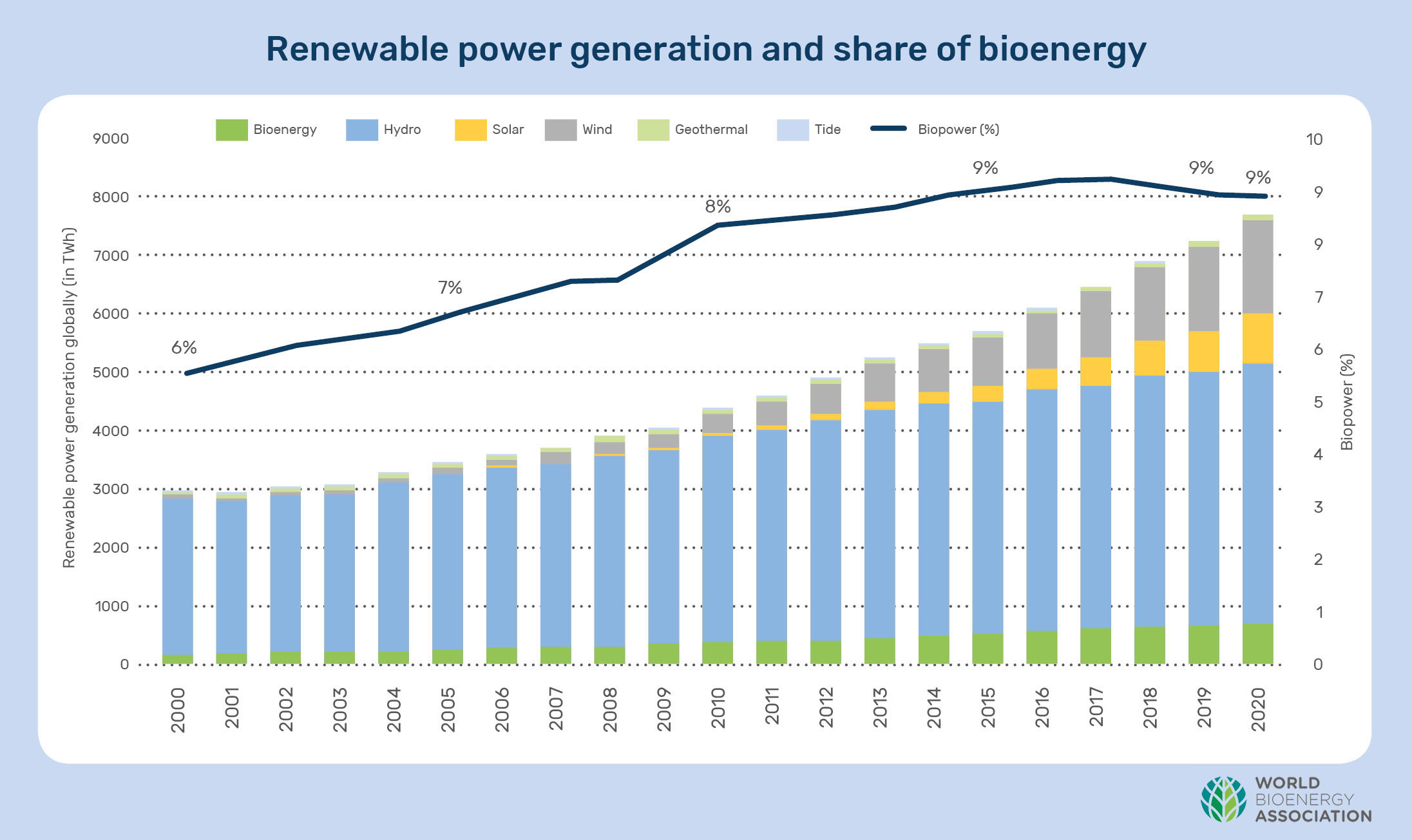
Globally, the electricity capacity generated from bioenergy has increased exponentially in the last 20 years, from 28 120 MW in 2000 to 148 912 MW in 2022. Within the continental level, in 2022, Asia represented 43% of the total electricity capacity harnessed from bioenergy. Europe and the Americas follow with 28% and 26% respectively.

HEAT
In 2020, 15.7 EJ of heat was produced globally via heat only and combined heat and power plants. Renewable energy technologies including biomass, geothermal and solar thermal have increased by 3 times in the global heat production over the past 20 years. However, share of renewables in heat production is currently at 8% (1.26 EJ). It is important to note that the heat production only includes the heat generated in power plants and supplied to customers via district heating networks. 96% of all renewable heat produced was from biomass with minor contribution from geothermal and solar thermal technologies. Europe leads the way in terms of the use of biomass for heat as close to 75% of bioheat produced globally occurred in Europe.
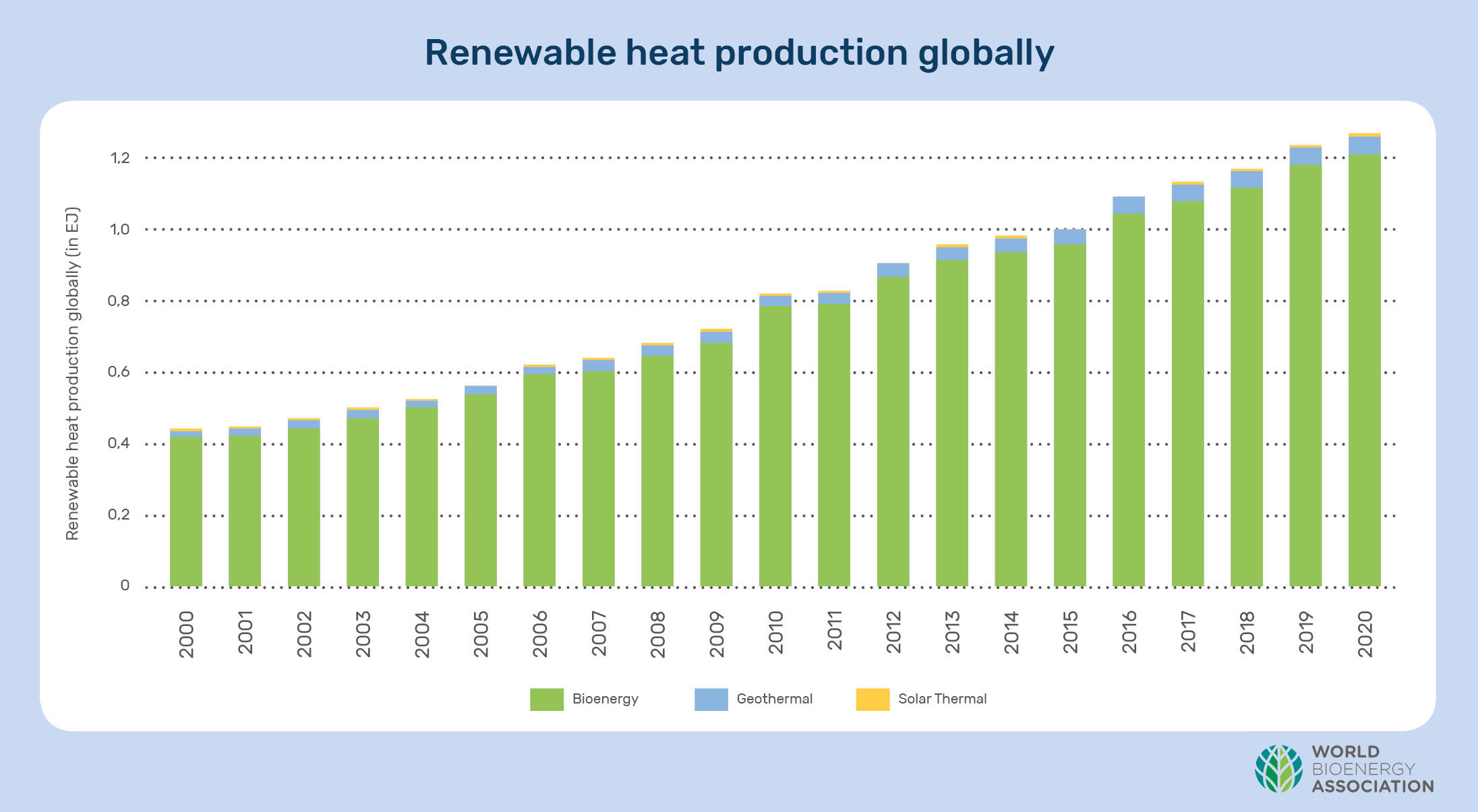
TRANSPORT
In 2021, 113 EJ of energy was consumed in the transport sector. Crude oil and oil products contribute 91% of the energy needs for the transport sector. The energy consumption in transport is more than the energy use for electricity globally. Electrification is an important option for decarbonizing the transport sector, but the contribution to the overall share in transport is 1.4%. It is important to note that the share of renewables in the electricity is only about 30% and hence, the overall share of renewable electricity is much lower. At the same time, liquid biofuels and biogas currently offer commercial and renewable fuel for the sector right now. Biofuels have a share of 3.5% in the overall energy use in the transport sector.
In 2020, 4.23 EJ of renewable energy was used in the transport sector globally (4.0% of the energy use in transport) and liquid and gaseous biofuels accounted for 90% of all renewable energy used in the sector. Share of renewable electricity (calculated based on the share of renewables in overall electricity sector) had a share of 10%.
In 2020, biofuels accounted for 99% of all renewable energy use in transport in the Americas and 63% at a global level. Both Europe and Asia had higher shares accounting for 88% and 71% respectively.
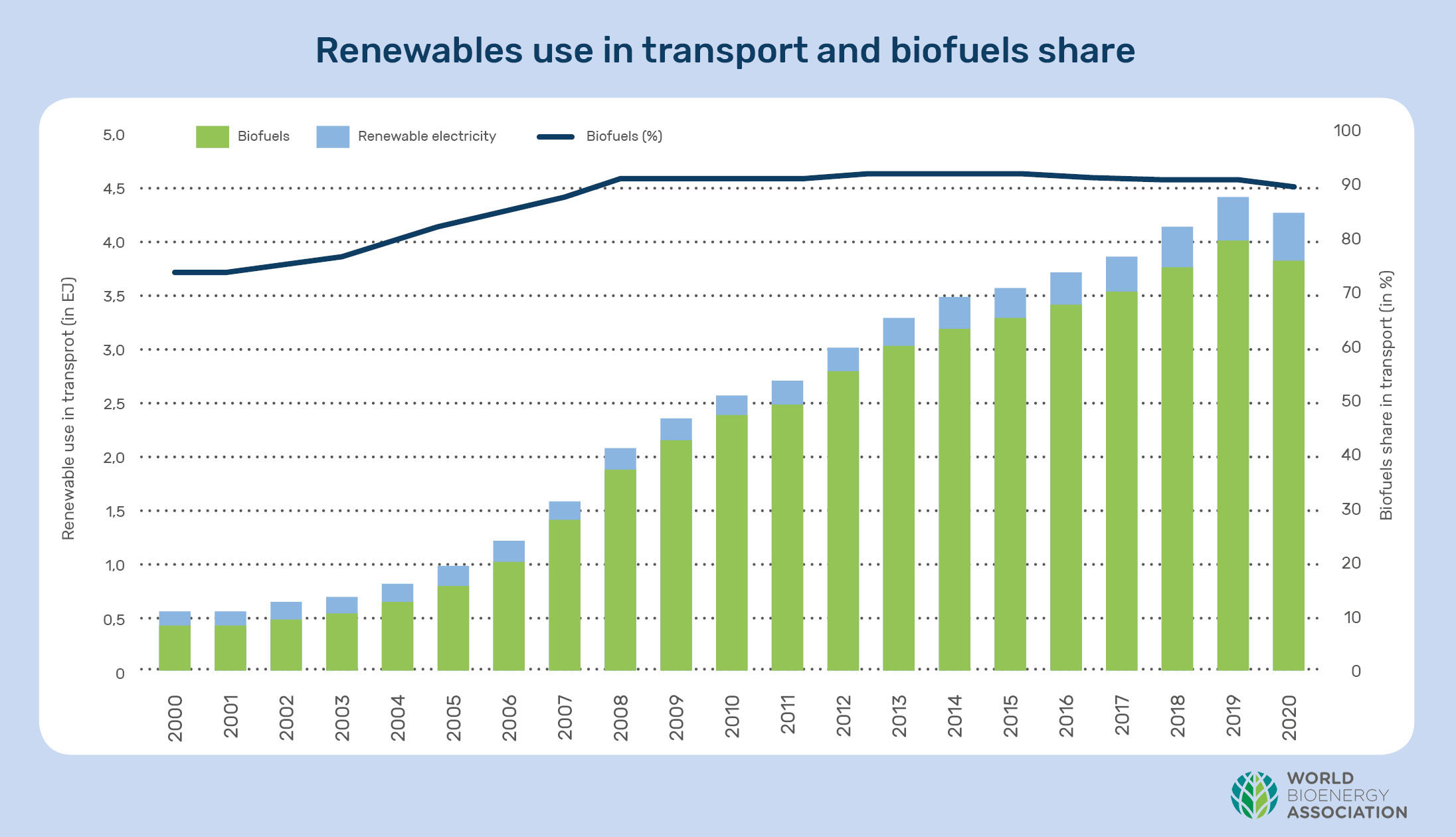
BIOMASS SUPPLY
In 2020, domestic supply of biomass was 57,5 EJ globally. 86% of the domestic supply was from solid biomass sources including wood chips, wood pellets and traditional biomass sources. Liquid biofuels accounted for 7%, municipal and industrial waste sectors accounted for 2 – 3% followed by biogas at 2%.

In 2022, 1.9 billion m3 of wood fuel was produced globally. Africa and Asia accounted for most of the production with shares of 37% each. 46.4 million tons of pellets were estimated to be produced globally in 2022. Europe accounts for the majority of wood pellets production with a share of 55% globally followed by the Americas at 31%. Wood charcoal is another key bioenergy sector with significant volumes being produced globally. In 2022, almost 55 million tonnes of wood charcoal were produced globally with Africa accounting for 70% of the global production.
In 2020, 38,1 billion m3 of biogas was produced globally with an equivalent energy content of 1.46 EJ. Europe is the world leader in biogas production. In 2020, Europe produced 20 billion m3 of biogas with an energy equivalent of 0.71 EJ. The production accounted for more than half of the global biogas production with Asia coming 2nd with a share of 32%.
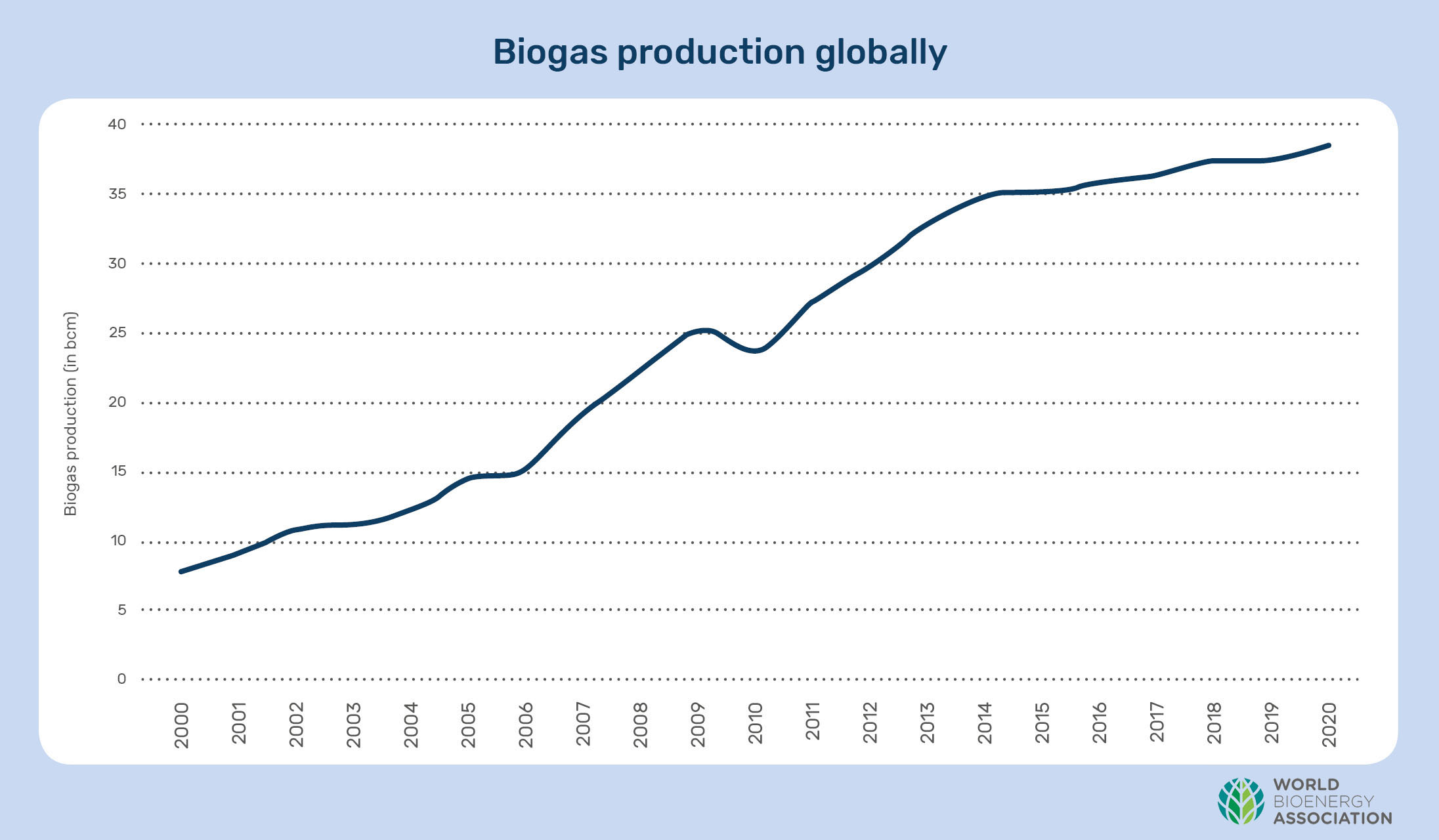
Source: WBA Global Bioenergy Statistics 2023 report
We thank Semen Drahniev, an expert of the Bioenergy Association of Ukraine, for analyzing the document.